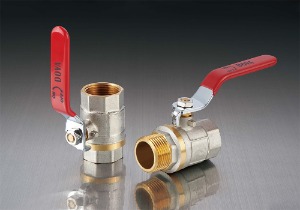2025-05-09
Brass ball valves are widely used in industries ranging from plumbing to oil and gas, owing to their durability, ease of use, and sealing capabilities. These valves, made from brass alloys, are essential components in controlling the flow of liquids and gases within pipes. Understanding the different types of brass ball valves and their applications is crucial for selecting the appropriate valve for specific systems.

Standard or Conventional Brass Ball Valve
The common type of brass ball valve is the standard or conventional ball valve. These valves consist of a ball with a hole in the center, which is positioned inside the valve body. When the valve handle is rotated, the ball is turned to either allow or block the flow of fluid.
Applications: Standard brass ball valves are ideal for use in general plumbing systems, water distribution systems, heating and cooling applications, and other fluid handling systems. They are particularly useful when there is a need for an on/off flow control, as the design offers a simple and effective way to stop or allow the passage of fluid.
Advantages: The simplicity of the design makes them easy to operate, and the brass construction offers durability, resistance to corrosion, and long service life. The reliable sealing capabilities make them suitable for a wide range of applications, including low and moderate pressure systems.
Two-Way Brass Ball Valve
A two-way brass ball valve is one of the simplest types of ball valves, consisting of two ports: an inlet and an outlet. These valves allow fluid to flow in one direction while blocking it in the other. The ball inside the valve is typically rotated 90 degrees to control the flow.
Applications: Two-way brass ball valves are commonly used in systems where the flow of fluid needs to be either fully stopped or fully allowed. They are often employed in residential and commercial plumbing systems, industrial process control, and systems where a simple on/off valve is sufficient. These valves are found in water treatment systems, heating, and HVAC systems, as well as in fuel and gas pipelines.
Advantages: Two-way brass ball valves are relatively easy to install and maintain, offering a high level of reliability. Their ability to provide a tight seal when closed ensures minimal leakage, making them suitable for various fluids, including water, oils, and gases.
Three-Way Brass Ball Valve
Three-way brass ball valves, as the name suggests, feature three ports: one inlet and two outlets. The ball inside the valve has a passage that can direct fluid to one of the two outlets, effectively diverting the flow of fluid to different parts of the system. These valves can be designed in two common configurations: L-port and T-port.
Applications: Three-way brass ball valves are often used in applications that require the redirection of fluid or the mixing of two different fluids. They are frequently used in heating systems, water treatment plants, and systems that require flow diversion. For example, in industrial processes, these valves can be used to control the flow of steam, chemicals, or water to different equipment.
Advantages: The ability to switch between multiple flow paths makes three-way brass ball valves highly versatile. They can be used for more complex fluid control operations, offering a greater level of flexibility compared to two-way valves.